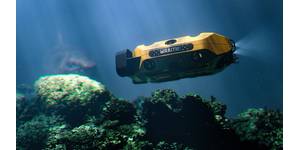Ultra-Deepwater AUVs and ROVs show their value by finding AF 447s Fuselage
If the earlier searches for the debris had made a more intensive use of ultra-deepwater AUVs, finding the sunken fuselage, the black boxes and voice recorders may have taken considerably less than two years. However we must also consider that the total estimated search area was huge. The first idea of using submarines, just wasn´t enough with the extreme depth involved (3,900 meters).
France had announced last February that it would begin the 4 phase of its search for the AF 447 debris, somewhere over 700 km from the north coast of Brazil, beyond the remote islands of Saint Peter and Saint Paul, a notorious shipwreck location. The new effort aimed to find the downed Airbus A330-200, which crashed on May 31 2009, killing all 228 passenger and crew members as it flew from Rio to Paris. This new search would cover a 10,000 km² area not previously searched. The new area to be searched was much larger than on previous attempts, which was at first 2,000 km² and later extended to 6,000 km².
The first discovery of debris was made using three Hydroid REMUS 6000 AUVs, using side scan sonar aided by acoustic imaging and seabed mapping software. Hydroid is a subsidiary of Norway´s Kongsberg Maritime, the leading manufacturer of AUVs. The search team led by the Woods Hole Oceanographic Institution (WHOI) and direction of French Bureau d’Enquetes et d’Analyses (BEA), left the port of Suápe, in the State of Ceara, in northeast Brazil, aboard the vessel Alucia on March 22, arriving at the search site on March 25. After just one week of searching, one of the mission’s three autonomous underwater vehicles (AUVs), the REMUS 6000s detected debris on the seafloor. A second vehicle was dispatched to the area for more detailed sonar mapping and photographic imaging.
Finally the front fuselage was discovered, with some corpses still strapped in, later the aft end, where the two black boxes are located was found. Yesterday during the Remora 6000 ROVs first dive, the chassis of one of the boxes was found and filmed, but without its memory bank. Today the ROV was to do another dive, trying to find the missing black box. The Remora 6000 ROVs is manufactured by U.S based Phoenix International, which has already supplied equipment for searches at sea of two other airliners.
These same ultra-deepwater AUVs and ROVs may also prove to be vital in searching and developing deepwater mineral deposits known to be buried in locations around the world, one of which is along parts of the mid Atlantic ridge.
Claudio Paschoa






















 August 2025
August 2025



